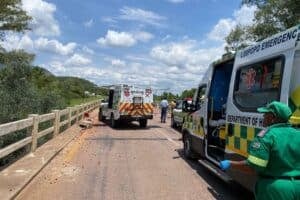Her early research continues to inform work being done in conservation efforts and studies around the world, even though it dates back to World War II.

Renowned ethologist and conservationist Dr Jane Goodall is known as the woman who transformed humanity’s relationship with animals and nature and, unsurprisingly, it was a book by Edgar Rice Burroughs which sparked her
unwavering passion for wildlife and nature conservation.
“I was 10 years old when I read Tarzan. I said one day I’m going to grow up to go live in the wild with animals and write
books about them. Everybody laughed at me,” says Goodall, 87.
Despite the naysayers, her mother believed in her and told her daughter that if she wanted to achieve this goal, she would have to work “really hard”.
Goodall was recently addressing young conservationists and fellow scientists during a webinar organised by Huawei’s annual Seeds for the Future Programme, which encourages information and communications technology students to develop a sense of social responsibility.
Goodall began her ground-breaking work during what began as a holiday trip to Kenya in the 1960s. She spent years studying the social and family life of wild chimpanzees in Tanzania and on observations challenging long-standing beliefs of primates and, ultimately, what people thought they knew about humans.
Goodall has also spent her life as an activist in conservation work and animal welfare issues through The Jane Goodall Institute and Roots and Shoots.
Her research and activism has helped the scientific community and, by extension, the world understand, empathise with and respect the lives of animals and the natural environment.
In 2006, the institute opened Chimp Eden in the 1000ha Umhloti Nature Reserve near Nelspruit, a sanctuary for chimpanzees displaced from their natural habitats in Africa.
Cute when small, chimps grow up with tremendous inherent strength and large teeth and are often from the pet and entertainment trades,as well as being used for bushmeat.
Money was tight during World War II and Goodall was unable to enrol at university. She arrived in Kenya with a qualification in bookkeeping and secretarial work.
The sweet irony was, the qualifications served her well as she was soon introduced to renowned palaeontologist Dr Louis Leakey. Goodall couldn’t have met the palaeontologist at a better time.
“Just a few days before I went to see him, his secretary had needed a secretary and I was there. I went to meet [him] at the museum,” Goodall says.
“He asked me hundreds of questions about animals and things and I think he was impressedby how much I knew because I had read every book I could find, which was not that much at the time.”
She expressed curiosity about wildlife in Kenya and eventually was asked to observe chimpanzees in their natural habitat, an “unheard of” feat at the time. Leaky believed women would make better observers in the field, perhaps because they might be more patient.
Goodall wonders if this is in part because of women’s nurturing and child-rearing role in society and suggests a kind of
patience in women may be built into their genes.
“I was just really fortunate [he] picked me and then because I succeeded, I suppose, he picked two more women, Diana
and Beirut, to study the gorillas near orangutans,” Goodall says.
Her early research continues to inform work being done in conservation efforts and studies around the world, even though it dates back to World War II.
Today, she embraces the gifts offered by technological advancements in data collection now being used by her foundation to conduct research in the Gambia National Park. There, the Jane Goodall Institute uses DNA analysis on
chimp faecal samples to tell the relationship between individual chimps.
“We’re using GIS GPS satellite imagery to map the range of the chimpanzees, to actually, in some cases, measure the different trees.
“We workshop with people from the local community, learning how to use smartphones or iPads to measure the health of their village’s forest preserves and, so, this kind of technology is really helping us to do our work better.”
Had this technology existed in her formative years of research, she admits she might have approached it differently. This might also have been a shame, because of the very personal nature of early forms of data collection and the stories which may have been missed.
“One of the most important aspects of our data collection is the written notes … it’s the storytelling. It’s learning about
the individual animals and how they all have different personalities. And if you just try and do it all on the data collection, you lose the heart of it. You get the nice graph but you lose the high,” says Goodall.
“So, although we love technology, we are very conscious that it’s just as important to have a narrative.”
Goodall believes in taking advantage of every opportunity.
“If you don’t give up, you may find a way,” she says.






